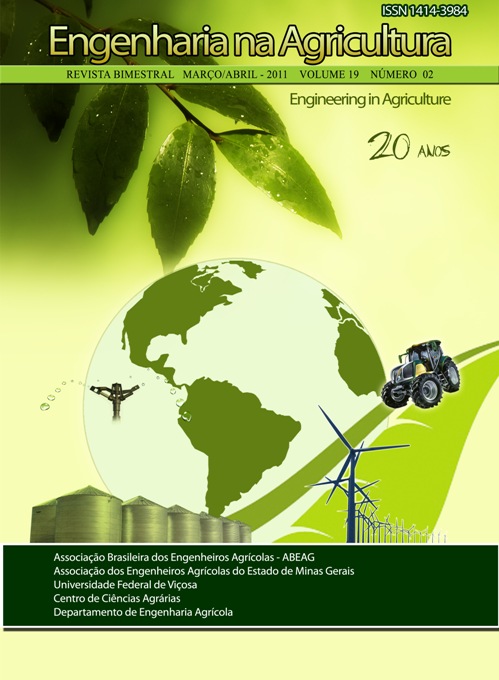CONCENTRATION OF SODIUM AND MACRONUTRIENTS IN THE LEAVES OF CULTIVATED PLANT SPECIES IN INTERCROPPING AND AT DIFFERENT LOCATIONS IN WETLANDS
DOI:
https://doi.org/10.13083/reveng.v19i2.187Keywords:
sistemas wetlands, tratamento de resíduos, espécies forrageirasAbstract
This study was done to evaluate the concentration of nutrients and sodium in the leaves of different plant species grown in consortium in constructed wetlands (CWs) used for domestic sewage treatment. The system consisted of 4 CWs of subsurface flow with the dimensions of 0.35 m deep x 1.0 m wide x 24.0 m long and impermeated with a polyvinyl chloride geomembrane. Each CW was filled with fine stones to 0.30 m thickness and planted with cattail, tifton-85 or alternantera, at four different locations. The organic load application rate and daily flow was 200 kg ha-1 d-1 and 1.6 m3 d-1, respectively, which allowed for a hydraulic retention time of 1.8 days. Only shoot phosphorus concentration was influenced by the plant location. The highest concentrations of nutrients, except potassium and sodium occurred in alternantera regardless location on the CWs. The tifton-85 grass should not be grown in the first third of the CWs, because of its intolerance to the environmental conditions.Downloads
Downloads
Published
How to Cite
Issue
Section
License
Authors who publish with this journal agree to the following terms:
The author(s) authorize(s) the publication of the text in the journal;
The author(s) ensure(s) that the contribution is original and unpublished and that it is not in the process of evaluation by another journal;
The journal is not responsible for the views, ideas and concepts presented in articles, and these are the sole responsibility of the author(s);
The publishers reserve the right to make textual adjustments and adapt texts to meet with publication standards.
From submission, the author is fully conceding the paper's patrimonial rights to the publication, but retaining the owner of its moral rights (authorship and paper's identification) according to Creative Commons Attribution-Noncommercial.








 Licensed by
Licensed by 